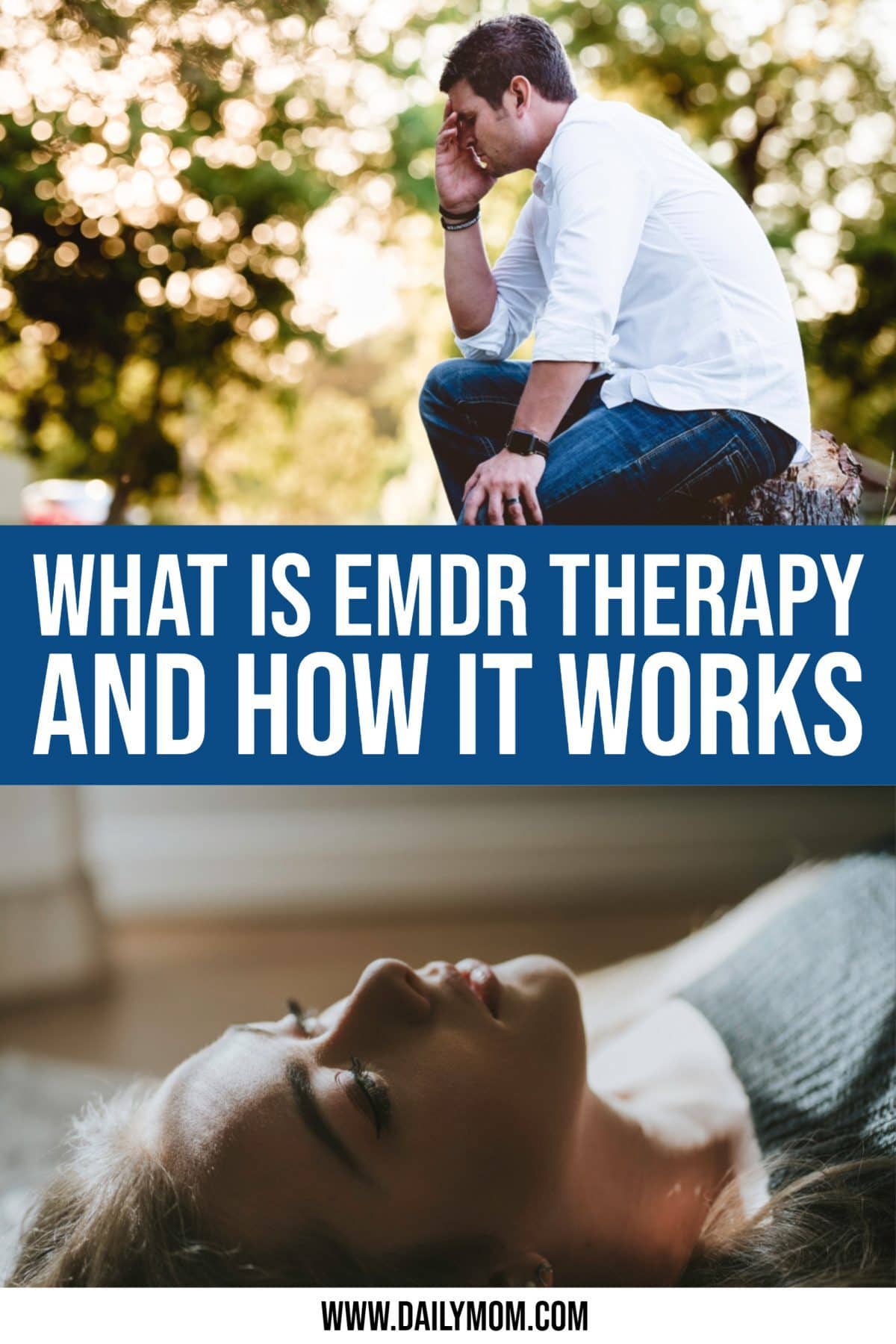EMDR therapy stands for Eye Movement Desensitization and Reprocessing therapy. But what is EMDR therapy exactly? It is a type of psychotherapy that helps people heal from the symptoms and emotional distress that are the result of disturbing life experiences. It is often used as a treatment for trauma and post-traumatic stress disorder (PTSD). During EMDR therapy, the patient is asked to focus on traumatic or triggering experiences in brief doses while the therapist directs their eye movements. Over time, this technique is believed to lessen the impact that those traumatic memories have on the person.
What is EMDR Therapy?
During EMDR therapy, the therapist has the patient think about different aspects of a memory and use their eyes to track the therapist’s hand as it moves back and forth across the patient’s field of vision. These eye movements trigger an internal mechanism to kick in and the patient will begin to process the memory and the feelings associated with it. This distraction of sorts is called bilateral stimulation.
This process is supposed to help the person who has experienced trauma transform what that trauma means to them. So over time, for example, a person who experienced abuse shifts from feeling ashamed or self-hatred to feeling like they are strong and a survivor. What is so different about this type of therapy is that the therapist does not converse with the patient while going through the process. The effect of EMDR therapy is that the patient feels empowered by the experiences and memories that were previously causing them trauma. It is a personal, transformational experience.
How EMDR Therapy Works
What is EMDR therapy’s process? EMDR therapy is made up of eight phases.
Phase 1 – History and Treatment Planning. First, the therapist will review the patient’s history and evaluate the patient’s past trauma to identify potential traumatic memories to specifically treat with EMDR. With this history, the therapist can determine the anticipated length of treatment, which depends on the trauma the patient has endured and the age of the patient when they started experiencing PTSD.

Phase 2 – Preparation. In this phase, the therapist will make sure the patient has different ways of handling emotional or psychological stress. The therapist will teach the patient different ways to cope with this stress, such as deep breathing and/or mindfulness techniques.
Phases 3 through 6 – Treatment. During these phases, the therapist will choose specific memories to target with EMDR therapy. The therapist will also have the patient to identify a positive belief. The patient will rate both the positive belief and the distressing memory. During sessions, the patient will be asked to focus on a certain negative thought, memory, or image while performing specific eye movements, tapping movements with their hands or feet, or some other movement. At this point, the patient is asked to notice whatever emotions or thoughts spontaneously happen.

Afterward, the therapist will ask the patient to let their mind go blank and notice the thoughts and feelings that come to mind. After identifying these thoughts, the therapist will either have the patient refocus on that negative memory or move on to another. This process will repeat a number of times over the course of multiple sessions.
Whenever the patient becomes distressed, the therapist will help bring their thoughts back to the present before moving to another distressing memory. Once the patient no longer feels distress related to the targeted memory, they are asked to think again about the positive belief they identified at the beginning of the session. At this point, the patient can adjust the positive belief if necessary and then focus on it during the next set of distressing events.
Phase 7 – Closure. As a way to start wrapping up the process, the therapist will have the patient keep a log during the week, or for a certain period of time. The patient will be asked to write down any thoughts or feelings that are related to the memories and thoughts they have been working on in therapy. The purpose of this phase is to remind the patient of the self-calming thoughts and activities that they learned in Phase 2.
Phase 8 – Evaluation. During the final phase, the patient and therapist will evaluate the patient’s progress.
How EMDR Therapy Works
EMDR therapy helps patients process distressing memories from past trauma, current situations causing distress, and distressing things that will happen in the future.
The reason EMDR is believed to be effective is because recalling distressing events is often less emotionally upsetting when your attention is diverted – that is the point of the eye movements, taps, and positive thoughts. These distractions allow a patient to be exposed to painful memories or thoughts without having a strong psychological response.
EMDR, Trauma, and PTSD

What is EMDR therapy for patients who have experienced trauma? For these patients, reliving traumatic experiences over and over in therapy can be challenging. EMDR therapy does not involve extended exposure to distressing memories or require the patient to give detailed descriptions of the trauma, reliving it over and over each session. However, for patients who need to talk about their past trauma, EMDR therapy can also be paired with other types of therapy, like Cognitive Behavior Therapy, to help treat trauma, PTSD, and/or anxiety.
EMDR therapy has shown to be extremely effective in treating patients with PTSD. Studies on EMDR therapy show that between 84%-90% of patients who experienced a single trauma no longer have PTSD after only three sessions. Another study found that 100% of patients who experienced a single trauma and 77% of patients who had experienced multiple traumas no longer showed signs of PTSD after only six sessions. In yet another study, 77% of combat veterans showed no signs of PTSD after 12 sessions.
EMDR therapy can be effective with both children and adults, as well as for people who suffered one trauma or multiple traumas. What is EMDR therapy to a patient suffering from PTSD? It is a treatment that can help them better cope with the trauma they have experienced and free them from the difficulty of living with PTSD. If you or someone you love is struggling with trauma or PTSD, EMDR therapy is worth looking into. It may just be the thing that helps you conquer that trauma.
WANT TO READ MORE?
Check out this article on Why Behavioral Health in Children is Important.

Photo Credits: Unsplash.com









































